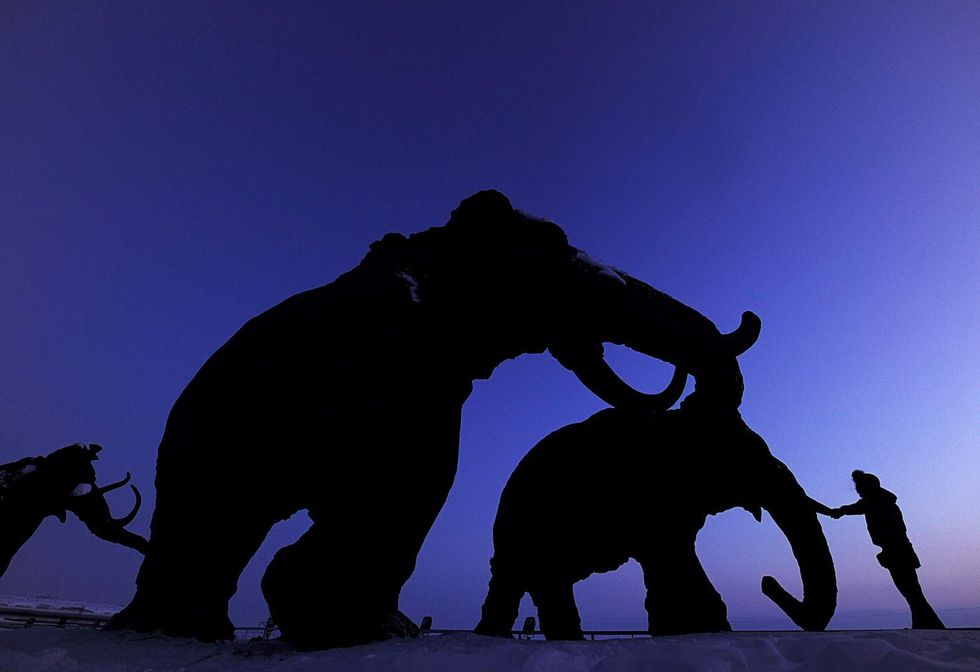
(FILES) A file picture taken on March 7, 2011, shows a man touching a giant bronze sculpture of a mammoth in the Siberian city of Khanty-Mansiysk. An international team of Russia’s and South Korea’s scientists have discovered well-preserved frozen woolly mammoth fragments that may contain living cells, that could allow the cloning the prehistoric animal, the team representative told AFP today. AFP PHOTO / NATALIA KOLESNIKOVA (Photo credit should read NATALIA KOLESNIKOVA/AFP/GettyImages)